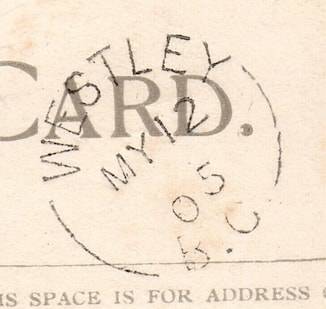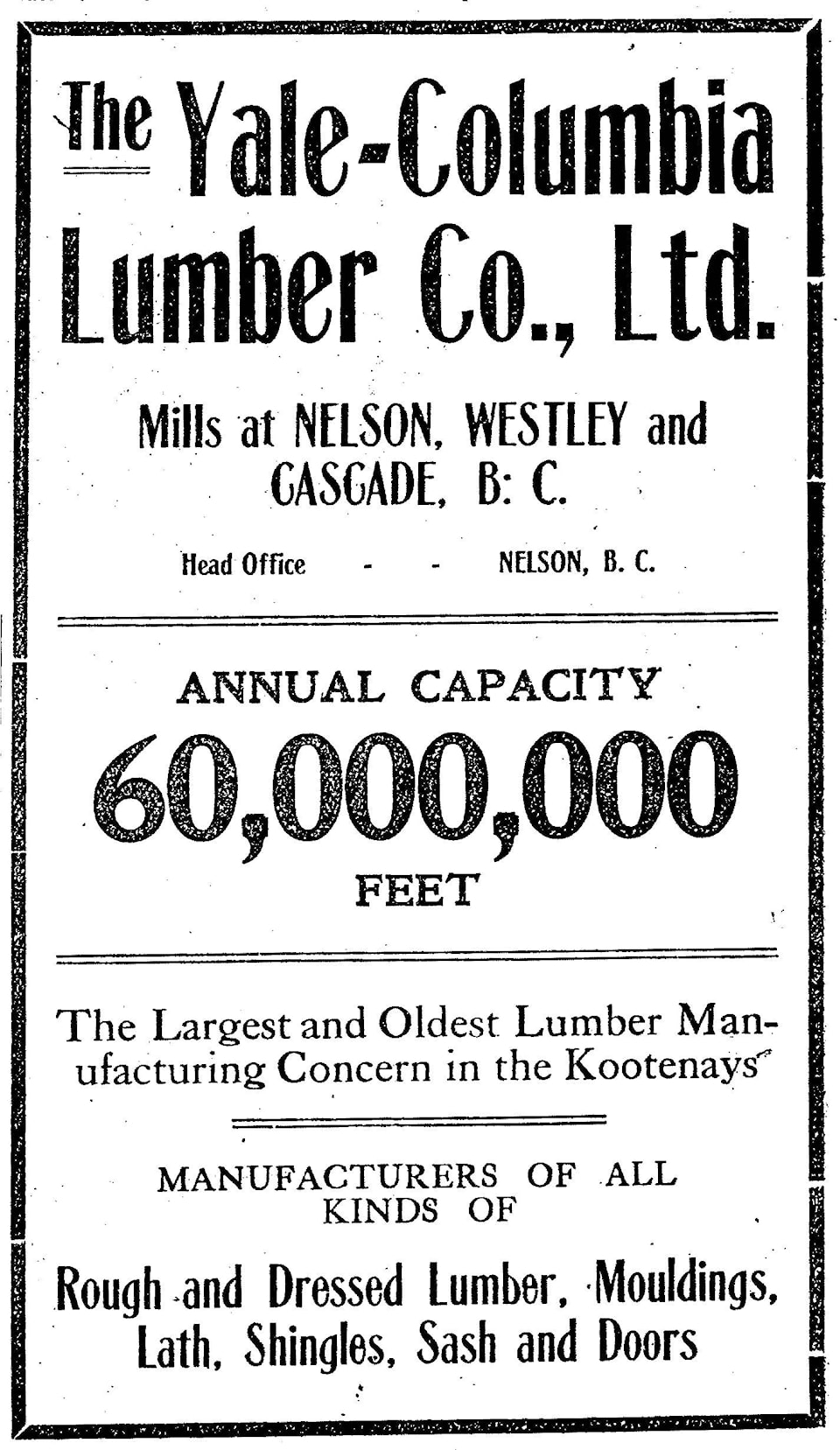A series on West Kootenay/Boundary place names
By Greg Nesteroff
Special to Black Press
Westley, also spelled Wesley and Westly, was the site of the Yale Columbia Lumber Co.’s sawmill on the south side of the Columbia River, close to Interfor’s present Castlegar operation.
The Westley post office opened on Aug. 1, 1903. When James White of the Geographic Survey of Canada inquired about the name in 1905, postmaster James H. Ellis replied: “Post office name Westley, railway name Material Yard, the latter name on account of material for railroad – West Robson to Midway – having been brought down the Arrow Lakes and stored here. Westley is a remote corruption of West Robson, at which place there was a post office until a few years ago. When the Robson office was closed and this one opened, the post office department wished to give this place a name somewhat similar to West Robson, but not so long, and chose Westley.”
In 1908, Material Yard was renamed Labarthe (previously covered in this series). Roger Burrows’ Railway Mileposts: British Columbia, Vol. II indicates Westley station was originally exactly seven kilometers west of Castlegar. Later the name was given to a car storage track 1.4 km further east. Material Yard was halfway between the two Westleys while Labarthe was 3.7 km west of the first Westley station.
Contemporary newspaper accounts reflect this confusion. The Greenwood Ledge of Dec. 10, 1908 said “The station heretofore known as Material Yard, being the second station west of Castlegar Junction, on the Boundary run, has been rechristened and will in future be called Labarthe.”
But the Nelson Daily News of May 5, 1909 stated: “Until recently, the place [Westley] was known as Materials Yard and as such is still generally known to railroaders.”
The latter story was about a fire that wiped out the Yale-Columbia mill as well as its stock of lumber and all the houses of the largely Sikh workforce. An unresolved discrepancy: Harold Webber’s People and Places indicates the mill was not rebuilt although the company store remained open until 1911, when the last of the log inventory was sold to the Waldie sawmill. Yet the Nelson Daily News of Jan. 5, 1910 carried a story that said Yale-Columbia “has mills at Nelson, Cascade, and Westley.” In any case, the post office closed in 1913.
The Westley Lumber Co. built another mill on the same site in 1927 but it also burned. The post office operated a second time from 1929-30. Westley was included in the BC civic directory through 1937, but no residents were listed after 1922.
WEST DEMARS
This spot, on the west side of Upper Arrow Lake, 16 km south of Nakusp, was first called Reid’s Landing, according to Kate Johnson’s Pioneer Days of Nakusp and the Arrow Lakes.
While no contemporary examples of the name have been found, Johnson said it honoured early fruit rancher John Samuel Reid (1859-1935) who “homesteaded quite a large acreage.”
Reid was furious when a sternwheeler cut a slice out of the bank upon landing, plowing under a row of his fruit trees. Gun in hand, he confronted the captain, who avoided stopping there for three weeks until the two finally made peace.
The land was divided into ten-acre fruit lands and placed on the market in 1907 by the Arrow Lakes Orchard Co. Reid was still living there in 1921, but Reid’s Landing had gone by the wayside, replaced by the name Sunnyside. The earliest mention yet found is in the Nelson Daily News of Jan. 5, 1910: “The points obtaining the greatest popularity … are Nakusp, Sunnyside, Arrow Park, Burton, Needles, Fire Valley, and Edgewood …”
Across the lake from Sunnyside was a settlement known as Demars, after Nelson Demars (1823-1908), who came to BC from Quebec in 1857 and was mining in the Big Bend country north of Revelstoke by 1866. He later mined placer claims on Cariboo Creek near Burton. In 1902, Demars became part of a deadly drama. After a night of drinking, Demars, Henry Rose, and John Cole set out in a boat from Nakusp. By the end of trip, Cole was dead and Demars severely beaten.
Rose stood trial for murder, and despite protesting his innocence — he claimed Rose and Cole had fought — he was convicted and became the last man hanged in Nelson. About a year before his death, Demars returned home to Quebec for the first time in 50 years. But he found few remembered him in his home village. Two of his sisters, who were only little girls when he left home, were living in Cobalt, Ont. They had long believed him dead and it took him some convincing to convince them that he was really their brother.
The earliest known mention of Demars was in the Daily News on Aug. 24, 1910: “There are now over 50 settlers at Sunnyside and Demers [sic] …” It’s not clear if the Demars referred to here was on the west or east side of the lake, but on Feb. 6, 1911 a post office opened at West Demars, the new name for Sunnyside. The post office closed in 1931 and moved to Glendevon.
The original Demars was renamed East Demars, first mentioned in the Vancouver Daily World of July 24, 1917: “Fires in the Arrow Lakes district are … spreading in the vicinity of Arrow Park, East Demars, and Whashan Lake.”
What remained of the twin Demars settlements by 1968 were casualties of the Keenlyside Dam, but the name is still in limited use.

